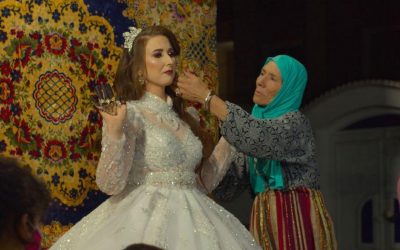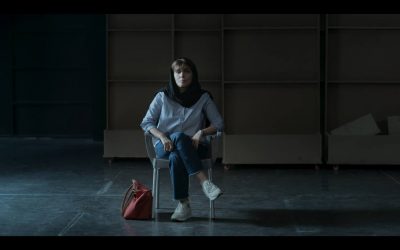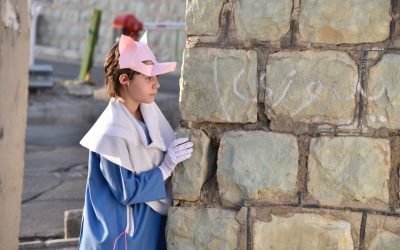By Pegah Pezeshki
The following text is based on nine films by Arab women filmmakers under the title “The Place of the Arab Woman in Struggle,” written by Pegah Pezeshki. This collection, curated by Giovanni Vimercati, was presented at Cryptofiction.
When we think of struggle and resistance, who comes to mind as the fighter? Especially when this struggle is tied to the Middle East—a region often depicted, under relentless media pressure, through a masculinized lens of combat. When someone fights or resists in the Middle East, who are they? Even a simple Google image search on such keywords reveals how long it takes to find an image of a woman depicted as an active participant in the fight—not as a supporter, a background figure, or a bystander. And when we finally reach such an image, another question emerges: when a woman fights, who is she? What does this image of the militant woman leave out—what women, what forms of feminine action does it exclude?
Jocelyne Saab’s Palestinian Women begins with the face of a child, accompanied by the sounds of children playing in the background, before the frame pulls back to reveal a scene resembling an ordinary daycare center. Children are playing, and women are taking care of them. But the narration quickly sets the record straight: “No, this is not an ordinary daycare center.” The children in this image are Palestinian refugee children, and the women taking care of them are described as “militants.”
The image of a woman caring for a child, feeding them, or playing with them is one of the most invisible in our surroundings. On the one hand, its presence—whether in reality or representation—is so normalized that it rarely draws attention or prompts reflection. Contrast this with our reaction to an image of a man caring for a child: the mental shift reveals the extent of this invisibility. Even for those who reject traditional gender roles, such a sight often elicits more attention, even praise, as something extraordinary. But a woman caring for a child? Unless the woman or the narrative insists, demanding, “Look!” the image remains unseen.

Pegah Pezeshki
This invisibility depoliticizes the act. The image of women caring for children—whether in a daycare or at home—draws so little attention that it conceals all the mechanisms behind it. It appears as though this “natural” act has never been political and never could be. In defiance of this indifferent gaze, Saab’s film opens with a resounding “No!” and quickly brings the political dimension of this specific image to the forefront: militant women caring for Palestinian refugee children. The film swiftly transitions from this scene to one of women engaged in military drills, continuing the tension established at the start by disrupting the binary of “ordinary woman” versus “political woman.” It’s not just these particular women whose childcare is political; this tension permeates the entire narrative, reclaiming the political dimension of the “ordinary woman” image. By highlighting how even caregiving—a role often devalued and dismissed by patriarchal systems—is inherently political, the film compels us to pause and recognize this politicization. Which women care for which children, and why and how?
Nicola Pratt, in her book Embodied Geopolitics, explores how women’s activism fundamentally disrupts the binary of “resistance” versus “compliance” with systems. Unlike this externally imposed binary, women’s experiences often challenge such dichotomies by exposing the ever-present political nature of what is deemed invisible or natural. Pratt writes:
“For example, women’s use of motherhood and maternal politics to protest human rights abuses (among others, the Madres de Plaza de Mayo in Argentina) and militarism (among others, the Greenham Common base women) constitute the performance of their gender identity in accord with dominant notions of femininity. Yet, simultaneously, these women subvert this gender identity by transposing it from the private sphere to an overtly political space that challenges the legitimacy of the state’s monopoly on violence.”
Thus, in politicizing the image of women caring for children and juxtaposing it with women holding guns in military drills, the imposed binary collapses. In this sense, the two initial questions—“Who fights?” and “What kind of woman do we imagine as a fighter?”—are deeply intertwined.
In Tell Your Story, Little Bird by Arab Lotfi, a documentary based on interviews with seven Arab militant women, this binary is once again challenged. The women sit on sofas and chairs in a “home” setting. Their clothes, appearances, speech, and surroundings align with the image of an “ordinary woman.” Yet, in this same home, they recount stories of activism, armed resistance, escape, torture, and more. Watching them “tell their stories” mirrors the same “No!” that opens Palestinian Women, inviting viewers to pause and scrutinize an image too ordinary to seem political.
This disruption reaches its peak in a specific narrative: Leila Khaled recounts how her four-year-old child returned from school saying, “The teacher said today, ‘Your mother hijacked a plane!’” Now, as a mother greeting her child after school, she must explain this statement and even answer the child’s follow-up question: “Where’s the plane now? I want to play with it.”
What collapses here is not just the image of “motherhood” as repetitive, ordinary, and system-aligned. It’s also the image of “militant femininity” as something extraordinary, un-womanly, and disconnected from the everyday. If we leave the question “When a woman fights, who is she?” to Google’s images or the perpetuated narratives of “fighting women,” we end up with distant, unrelatable, and unattainable heroines. Yet the figure of the “hero” is the least feminine construct, emerging from the denial of resistance in the lives of those who are not called heroes.
Films that allow women to narrate their struggles dismantle this isolation. Now, a mother takes her child’s hand and tells them where “that plane” is.
But can this challenge to the binary image of women also address the first question: Who fights? The exclusion of women’s struggles from the broader narrative of social resistance is neither new nor unfamiliar. This exclusion reproduces itself across multiple layers. The battlefield for women becomes unsafe, entangled with domination and suppression. The memory of their tenacious presence in these same spaces is often left out of the broader narrative of “collective/national/regional resistance.” And where neither of these layers erases them—where women remain in the field and preserve the memory of their struggle—this presence is often relegated to a narrowly defined, gendered space: a fight for “women’s issues,” running parallel to or, at best, as a subset of the “main struggl e.”
Fatma, a film about years of women’s struggle in Tunisia, grapples with this very question: does this line of separation truly exist in the memory and experience of collective resistance? The film explores how women who were left out of the constructed image of the fighter—militant, activist—have always been a vital part of that very picture. This inflated gender binary becomes even more pronounced when it comes to the Middle East. It’s as if, in the Middle East of blood and fire, it’s still “not the time” to challenge and redefine our image of the fighter, to liberate it from entrenched gender stereotypes. The image of the “hero” still stands center stage.











